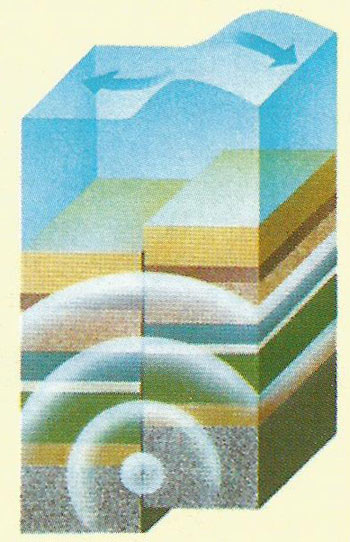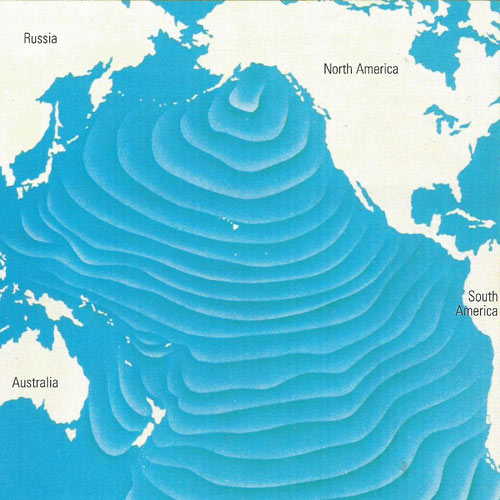tsunami

Tsunamis are dramatic waves usually generated when a submarine earthquake causes a sudden shift in the ocean floor along a fault line.

Map showing the hourly progression of a tsunami that originated just south of Alaska.

People run from an approaching tsunami in Hilo, Hawai'i, on 1 April 1946; note the wave just left of the man's head in right center of image. Credit: The Pacific Tsunami Museum in Hilo, Hawai'i.
A tsunami is a wave or series of waves that are generated in a body of water by a sudden disturbance that displaces water (tsunami is Japanese for 'harbor wave'). Found mainly in the Pacific, tsunami are typically caused by earthquakes and landslides in coastal regions. In mid-ocean, the wave height is usually under 1 m, the distance between succeeding crests being of the order of 200 kilometers, and the velocity about 750 kilometers per hour (400 mph). Near the coast, friction with the sea bottom slows the wave, so that the distance between crests decreases, the wave height increasing to about 25 meters or more.
Volcanic eruptions, nuclear explosions, and even impact of meteorites, asteroids, and comets from outer space can also generate tsunamis.


